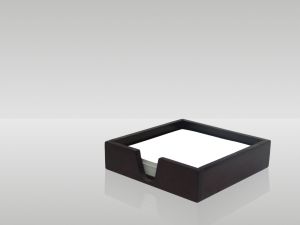This is the first post in an ongoing series I’m calling “back to Basics”, a “refresher course” in personal productivity. For people just starting to grapple with issues of productivity, it will serve as an introduction to the basic concepts that underlie much of what we write here at Lifehack. For more advanced readers, it will serve as a reminder of what you thought you were setting out to do before you started fiddling with your system. I’m not sure how long the series will be – I intend to keep going until a) I run out of topics to cover, or b) people start asking me to stop. :-)
Your Inbox
We start, then, where most productivity systems start: your inbox. By “inbox”, I don’t necessarily mean one of those plastic or wooden trays you set on your desk and pile everything into; that’s one kind of inbox, but not the only kind. Basically, an inbox is any place where you collect inputs into your life for later processing, whether those inputs are information, correspondence, notes, unfinished work, things you intend to look at later, or whatever. An inbox, then, can be a tray in your office, a table by your front door, a notebook you carry in your purse or pocket, or a pocket in your shoulder bag. We also have “virtual” inboxes: your email program, your RSS reader, note-organizing apps like Evernote, even a text or word processing file you keep open on your desktop. And don’t forget your computer monitor – if you’re one of those people who covers their monitor with post-its, that, too, is an inbox.
The Fewer, the Better
As a general rule, the fewer inboxes you have, the better. Fewer inboxes means less places where important material can escape your notice, and also less time to process everything you need out of them. As a practical matter, your inboxes should be treated as end-points, with all your various inputs funneling towards them. As I said, this assures that everything eventually gets put in a place where you’re going to pay some attention to it. With more and more of us using online web applications, it’s becoming quite easy to make sure your digital inputs end up in a single place. Most services will allow you to send things easily to your email, and you can set up rules to automatically forward stuff where it needs to end up, thus automating some of the processing of your inbox. For example, you could have all emails with attachments forwarded automatically to your Google Docs account so you can access them and even edit them from just about anywhere (that’s assuming you don’t regularly receive documents whose value you need to ascertain before deciding what you need to do with it). For physical inputs, make sure everyone knows where to put things that they want you to see and do something about – mail, documents to review, research material, whatever. At work, this tends not to be so difficult; at home it will be another story! You’ll help make sure that your chosen inbox is seen as a place to put things that need action if you regularly process it’s contents so that it doesn’t become a place where inputs go to be forgotten. And make sure you set an example by using your inbox yourself! When you’re away from your desk or from home, keep a notebook or pack of index cards with you and jot notes, appointments, numbers, etc. down as they come to you. When you get to your inbox, drop it in and process it according to your normal schedule. If you don’t make good use of your inbox, nobody else will.
An Inbox Alone Isn’t Productive
It’s important that your inboxes not be treated as final destinations! An inbox is only useful as a place to collect everything that’s important, to get it out of your head so that you can do something with it. Inboxes that just keep filling up are worse than useless; not only do they not help you do the things that are important enough to you to end up in your inbox, but they soon overflow and leave you in search of a new inbox to fill with all your new important stuff. All the while you get further and further behind… Set up an inbox-cleaning routine that fits your workstyle and the rate at which it fills. While you don’t want to let it fill to overflowing, you also don’t want to feel compelled to process everything the moment it hits your inbox. The point of your inbox is to help you manage your inputs, not to allow your inputs to manage you!
Next Time: Processing Your Inbox
In the next “Back to Basics” post, we’ll look at ways of processing the material that ends up in your inboxes. While it might take some effort and discipline to make sure your inboxes are used effectively, maintaining an inbox is a largely passive affair: stuff keeps filling your inbox whether you do anything or not. Processing is the first part of doing, where you start making active decisions about what to do with each item in your inbox. Do you have any useful tips to help your fellow readers channel all their inputs into one place? Let us know in the comments!
